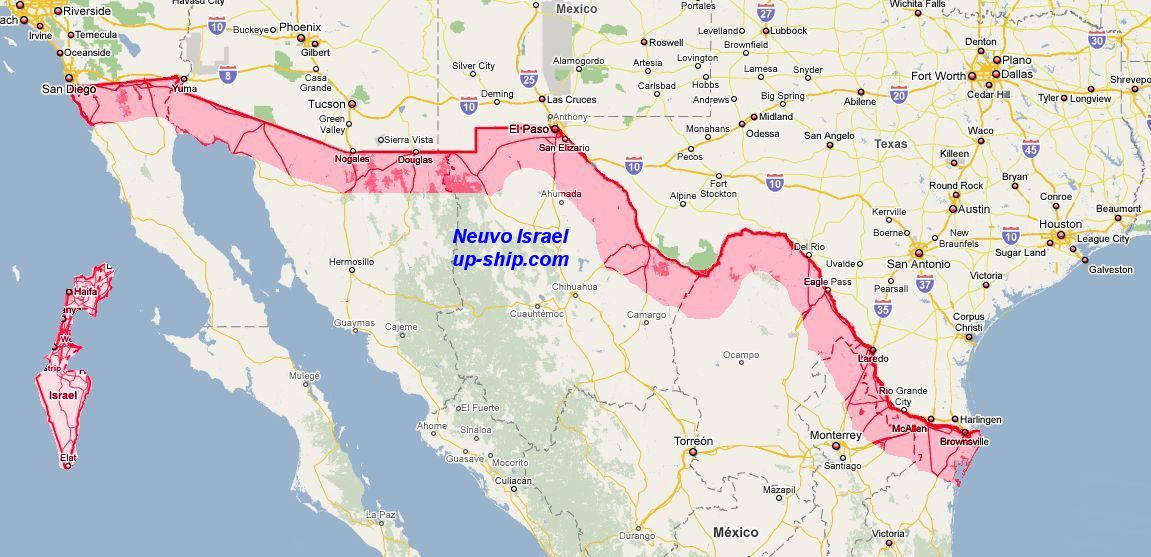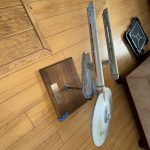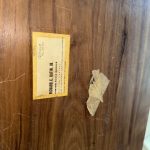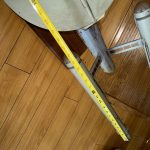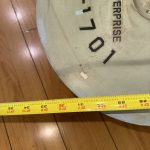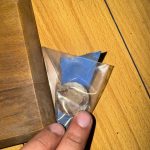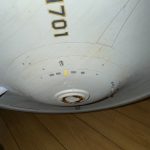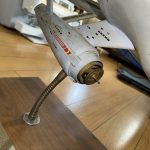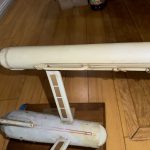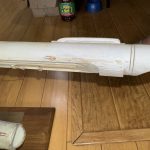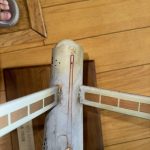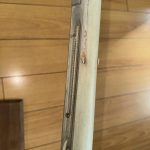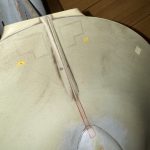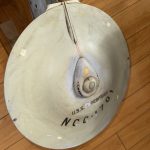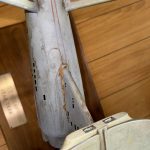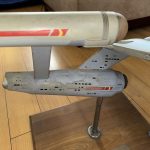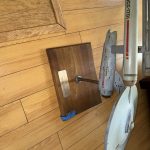The basic issue comes down to this… the Israelies had the poor manners to occupy Muslim territory. Granted, it was Christian territory before the Muslims conquered it, and Roman Pagan territory before the Chistians conquered it, and Jewish territory before the Romans conquered it… but apparently Muslims are real twitchy about Muslim territory being made “not Muslim territory anymore.” The consequence of this is that the Israelies are forever going to be in a state of siege. It doesn’t help that both sides see that little scrap of land as their Rightful Gift From God. When people are convinced that their God wants them to be someplace, they’ll often enough make some effort to actually be there.
So, what to do? I have a suggestion. It would work. It only has one serious flaw.
It boils down to this: give up on the scrap of land currently known as “Israel.” Pull the Israeli people out, put them somewhere else. However, the entirety of land area on Earth, except for Antarctica, is owned by somebody. So, whereever New Israel might be, is currently already somebody else’s. At first blush, that means the problem has not been solved… same issue as with Israel/Palestine. But here’s the thing: most people on Earth are sane enough that they can be bought. This was not the case in the Middle East…. they’s crazy. But there are lots of scraps of land that can be had, if you just know how to bargain. And I have just the scrap of land: northern Mexico. Specifically, a strip along the US/Mexico border, 50 miles wide, stretching from the Gulf of Mexico to the Pacific.
A few questions:
1) How much would this cost? I have no friggen’ clue. Probably a trillion dollars or more.
2) Who would pay for this? I’d suggest a split between the US and Israel, both governmental and private donors. I’d suggest that the bulk of it come from the US, and be paid to Mexico over a period of, say, thirty years. Israel would be on the hook to repay the US over the following thirty years or so.
3) Why would the Israelies want this? They’d have their own spot of land for Nuevo Israel, with an ally on one side, and on the other… someone who at the very least doesn’t really give a rats ass.
4) Why would the US want this? Several reasons. For starters, we could finally tell the Middle East to go piss up a rope. The ME’s troubles are hardly going to go away if the Israelies bug out; the local Arab governments are simply going to have to scramble to find some other bullshit strawgoblin to rattle their populace with. Second, having Israel on the southern border would mean nothing but goodness for the US. Illegal immigration would slow to a crawl; the drug trade would be similarly stymied. Cross-border crime from Mexican drug gangs would be a thing of the past. Any drug gangs on the Mexico/Nuevo Israel border who to tried to cause a ruckus would find out that the IDF is not as hand-tied as the US border patrol. The costs involved in this land purchase would, in the long run, be a pittance compared to the savings to the American penal and health care systems, never mind the economy in general.
5) Why would the Mexican government want this? Buckets of money.
6) Why would the Mexican people want this? Many probably wouldn’t… but again, there’s that “buckets of money” thing. The deal could ladle out large sums to Mexican families currently living in the strip to move south. Mexicans who don’t want to leave could be incorporated into Nuevo Israel, much as many Arabs were integrated into Israel. Those who stay would find that their surroundings would get vastly better. Instead of corrupt Mexican cops and government, there’d be the NIDF forces. Criminals would very quickly find themselves deported to Old Mexico.
OK, here’s the big, HUGE stumbling block: God. Getting God’s Chosen People to clear off of God’s Chosen Real Estate could be trouble. Still, the majority of the Israelies seem like reasonably reasonable folk… just as reasonable religious folk see Genesis not as literal fact but as allegorical, so could the idea of “Israel is wherever the Israelies are” be spun.
Also, there are a whole lot of Christian and Jewish “holy sites” in the current land of Israel. Well… presumably they’ll still be there, even after the Palestinians sweep in and loot whatever the Israelies leave behind. And once the Israelies are gone, the Arab world (along with the rest of the world) will stop giving a damn about Palestine; after the famine and general pestilence passes through and burns out the whackadoodle element, the tourism trade will be all that’s left, and should do brisk business with Nuevo Israelies visiting the ancient homeland once or twice in their lives. Practically, this should be doable… after all, all Muslims with the means of doing so are supposed to visit Mecca at least once in their lives, but they seem to be fine with going back home to Indonesia or Canada or wherever once the visit’s over.
And hey… if as the Israelies are packing up and leaving they dig up the Temple Mount and ship it across the sea… who’d notice?
Below is a map showing the rough geometry of Nuevo Israel as a 50-mile-wide strip. There’d be some good seashore for ports, both east and west. Off in the Pacific is the current state of Israel for scale. Clearly, Nuevo Israel would be vastly larger. Lots of room to grow… and seeing what the Israelies did with the Negev desert, it would not be shocking if, a century or three down the line, the US/Mexico border is easily seen from the Moon as a verdant belt fifty miles wide.
